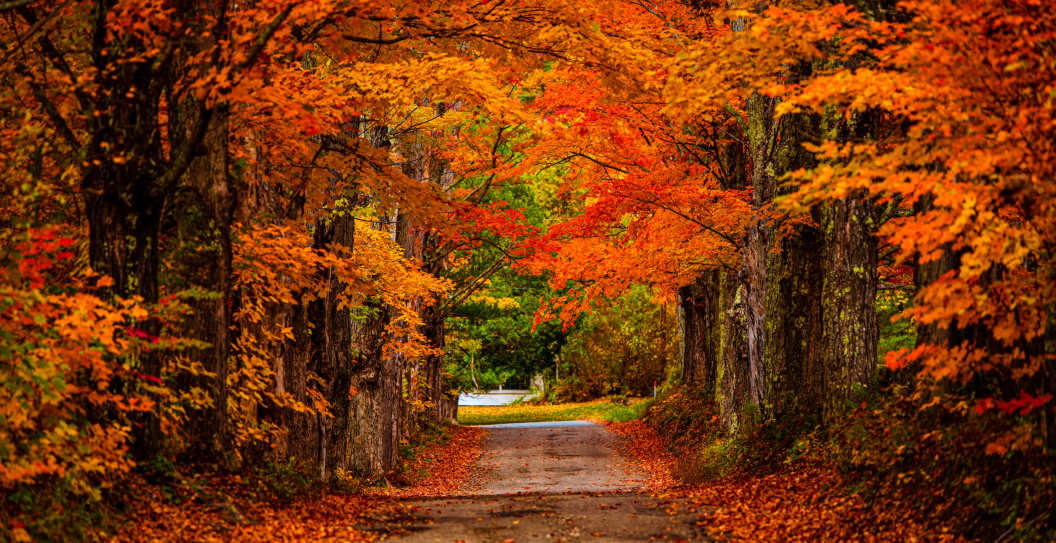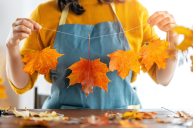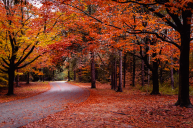There is no seasonal change more visibly appealing—and Instagrammable—than the autumnal hues that grace our trees when fall arrives. From deep, vibrant reds to burnished yellows and oranges, it's a spectacle that Mother Nature proudly displays each year. But what causes this glorious transformation of colors?
Videos by Wide Open Country
The answer lies in two little chemicals: chlorophyll and carotenoids.
According to the Smithsonian, chlorophyll is responsible for both photosynthesis and the green pigment that appears in most plants. During the spring and summer months, when the sun is out, and temperatures are warm, chlorophyll is most active. This allows the plant to absorb sunlight and convert it into energy for growth.
So when the days become shorter and the sun is less out and about, chlorophyll production slows down, revealing the carotenoid pigments that were already present in the leaves.
That's right, leaves are technically always yellow and orange. It's just that the green chlorophyll produced during warmer months masks their true color. It's only once they're exposed to the slowing effects of fall that we can finally get a glimpse of the stunning shades of autumn foliage we know and love.
Now those ultra-vibrant red leaves are a different story. That color change is actually the result of sugars getting trapped in the leaves and producing new pigments called anthocyanins. Dogwoods and oaks are particularly adept at producing these red shades.
Want to know a little more about the phenomenon of autumn foliage? Read on.
What Temperature Causes Leaves to Change Color?
Despite what you might think, temperature has little effect on leaf color change. Instead, it's light that plays the biggest role in bringing forth the autumn colors.
The Forest Service of the U.S. Department of Agriculture reports that the length of nighttime is easily the best way to predict when the leaves will change their colors. The biochemical process needed for the color shift is triggered by shorter days and longer nights, not cooler temperatures.
However, temperature and moisture can determine the vibrancy in those red, purple, and crimson-toned leaves. Yellow and orange leaves will look mostly the same every year.
Which Trees Change First?
That depends entirely on where you live. However, the Old Farmer's Almanac says to expect tulip poplar and maple trees to turn first. Last in line tends to be the oak, hickory, and beech trees. Everything else falls somewhere in the middle.
Want to know what you can expect from your local flora? Here are the type of hues some of the most common trees are known to produce:
- Aspen: Golden
- Beech: Golden brown
- Birch: bright yellow
- Black Maple: glowing yellow
- Canada Red Choke Cherry: red or reddish-purple
- Dogwood: purple-red
- Hickory: golden bronze
- Maple-Leaf Viburnum: pinkish purple
- Oaks: brown or russet
- Poplar: golden yellow
- Red Maple: bright scarlet
- Sassafras: orange-yellow
- Silver Maple: muted green
- Sugar Maple: orange-red
- Tupelo: yellow-orange, then red
Does Rain Help Fall Colors?
Eh, not really. As we mentioned early, fall colors are primarily determined by the length of nighttime. Since rain is usually accompanied by windy conditions, storms can actually shorten the fall foliage season by prematurely knocking leaves down from their branches.
When it comes to vibrantly colored leaves, cold and sunny days are the best conditions to help those hues reach their full potential.
Do Trees Turn the Same Color Every Fall?
It depends on the color. Yellow and orange leaves—which, again, are actually present in the foliage all year round—tend to be mostly consistent from season to season. But red leaves can vary in their intensity and vibrancy depending on a variety of factors, but mainly light exposure.
Sunlight manufactures anthocyanins, the pigments responsible for those deep reds. When there's plenty of sun during the fall, the trees will produce an abundance of this vibrant shade.
When is the Best Time to See Fall Leaves?
And finally, the million-dollar question: when should you get out to see the leaves in all their colorful glory?
Mother Nature seems to pride herself on her unpredictability. So there's no way to say for sure when the leaves will turn. However, the U.S. Forest Service reports that peak leaf-peeping time usually starts in September up in New England and then gradually moves southward, hitting the Smoky Mountains (and those Western states with enough high elevation—by early November.
If you want to catch a glimpse of those autumn hues at their best, you need to stay on top of weather and foliage forecasts. The Old Farmer's Almanac provides some helpful resources to track the changing of the season, but keeping up with your local news sources will also go a long way.
We may never truly be able to pin down the exact moment when fall arrives, but with some careful research and planning, you can make sure you don't miss out on Mother Nature's favorite time of year.




